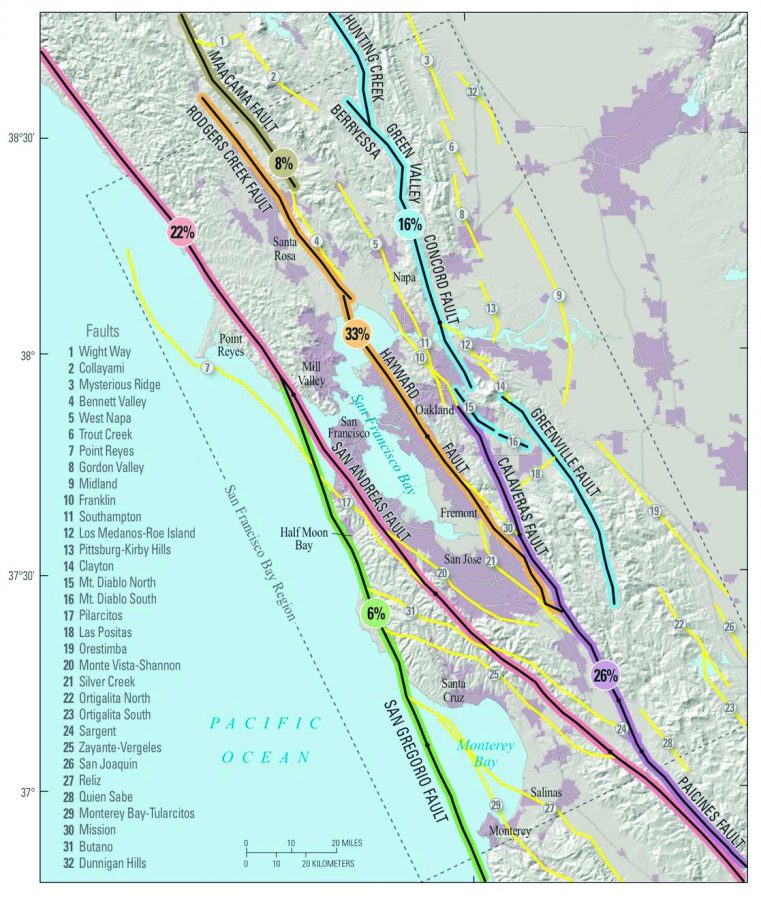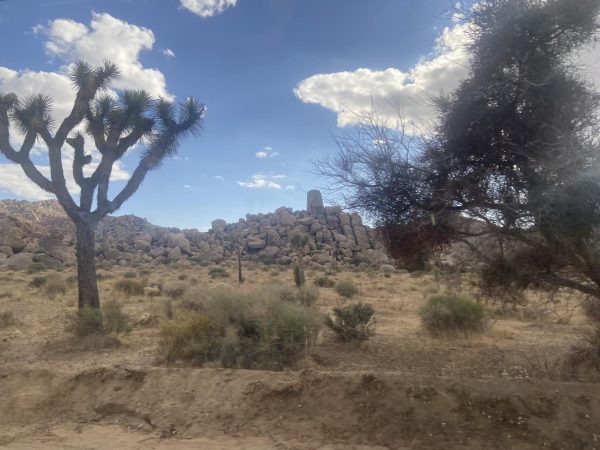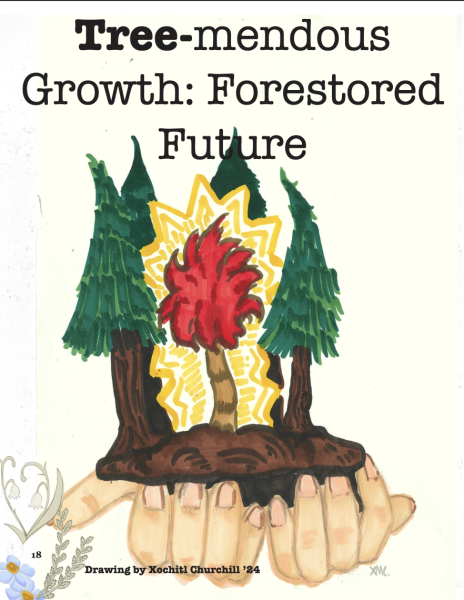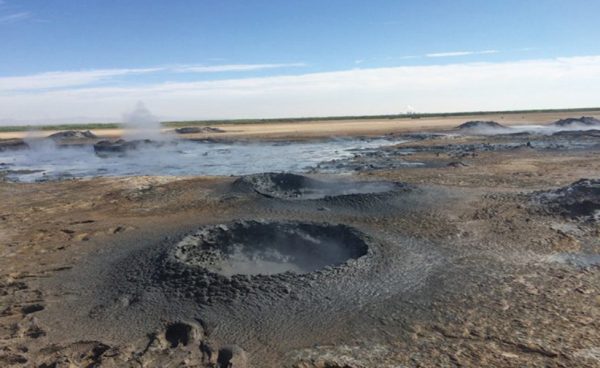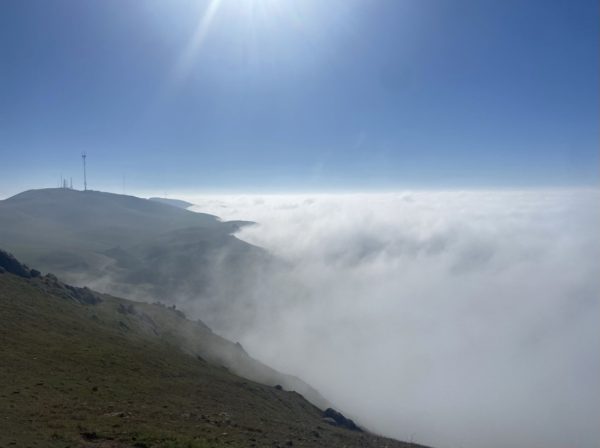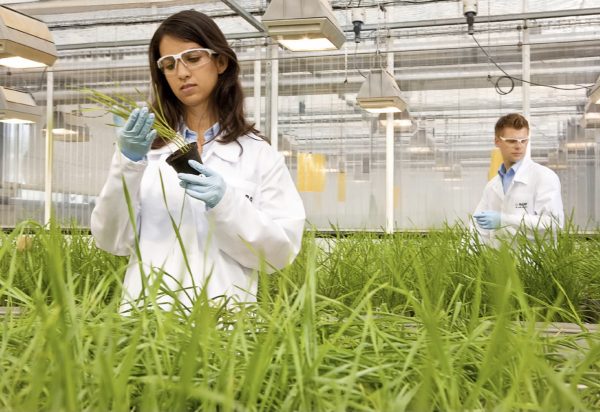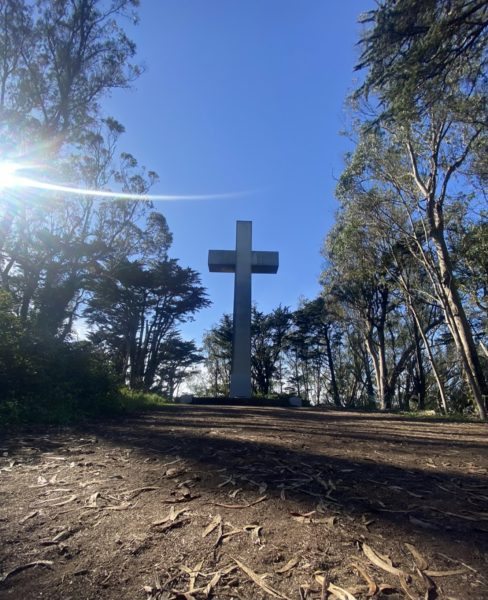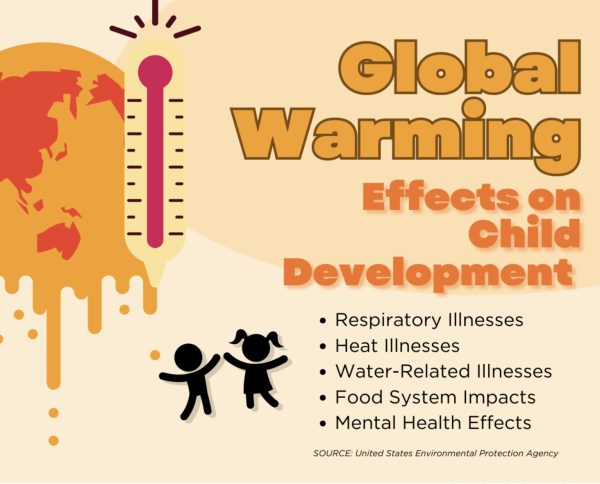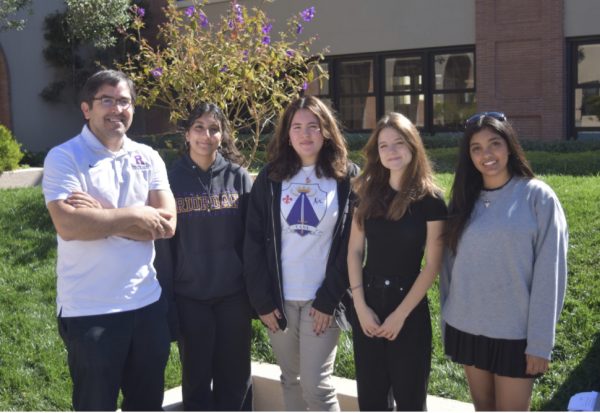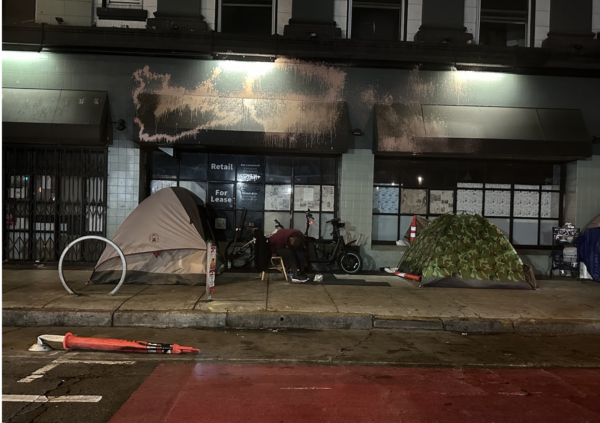Faults found in Bay Area earthquake safety
This map, produced by the United States Geological Society, shows the likelihood of a major earthquake striking the various California faults. Two faults that cross the Bay Area, the San Andreas and Hayward faults, are among the highest at 22 and 33 percent, with the Calaveras Fault in between with a 26 percent probability.
May 7, 2018
As everybody who lives or works in San Francisco knows, the beautiful city is right on the ring of fire. Thanks to this geographical fact, San Francisco is always at risk for a major earthquake. Since earthquakes are so incredibly random, the only ways to be safe is to retrofit buildings and buy earthquake supplies, but even these steps don’t ensure survival.
Among the many items one could be saving for an earthquake, there are some must haves if it’s a big one. Non-perishable food and water is top priority, but make sure to store some utensils such as can openers. Some sort of water purifier or filter is essential if the water goes out.
“I have lots of canned food, water, solar chargers, batteries, and an electrical generator that uses gas,” stated Connor Rapier ’20.
If anyone is injured, people will need medical supplies like bandages and medicine. In the 1906 San Francisco earthquake, the earthquake caused a lot of destruction, but what caused the most damage was the huge fire that followed. In case something like that tragedy happens again, a fire extinguisher is extremely important for safety.
Riordan is ready for a big quake.
“On the field, there is a shipping container filled with earthquake supplies for 72 hours that has food, water, blankets, propane and other supplies,” said Scott Rea ’87, Director of Facilities.
The USGS reports that if a 7.0 magnitude (or higher) earthquake on the Hayward fault occurs, the damage would be colossal and power could go down. There’s a study that takes in a great number of possible outcomes and lists them so residents are able to plan accordingly for the big quake. The study is known as the Haywired Fault and its groundbreaking strategy can be used for other faults and locations too.
According to Kron 4 News, around 2,000 buildings in San Francisco are still made of concrete, one of the deadliest types of structure to be in during an earthquake. Those inside during an earthquake, should stay away from windows, protect their neck, and find something sturdy to hide under like a doorway or a desk.
Jim Cayabyab ’20 said, “I stay calm and hide underneath a desk. At home I have flashlights, medkits, and a surplus of food.”
Theology teacher Joshua Keeney said he would have to access the situation, then act. “I have to realize I’m in an earthquake, then monitor the severity of the earthquake.”


